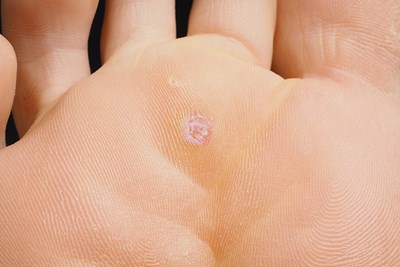Warts that grow on the heels or balls of your feet are known as plantar warts. These warts are hard, grainy growths that can also grow under a tough, thick layer of your skin, which is recognized as a callus.
Plantar Wart Causes
The human papillomavirus (HPV) causes plantar warts. HPV enters your body through cuts, tears, or other vulnerable areas on the bottom of your feet. However, plantar warts aren't highly contagious. Although warts can spread on your own feet, they aren’t easily spread through person to person contact.
The strain of HPV that causes plantar warts thrives in warm, damp environments. So you do have some risk of contracting the virus when walking barefoot around swimming pools or locker rooms.
Preventing the Spread of Plantar Warts
The best way to prevent plantar warts is to do what you can to not come into contact with HPV.
Ways to avoid HPV include:
- Avoid touching warts on your feet
- Avoid walking barefoot on warm, moist surfaces where the wart virus may be alive
- Wear shower shoes when using public showers, locker rooms, or pool areas.
- Keep your feet dry
- Avoid injuries on the bottoms of your feet
Preventing More Plantar Warts
If you already have a wart on your foot, you can try treating it at home to prevent the wart from spreading. Remedies include:
- Salicylic acid: Because of the effectiveness and safety of salicylic acid, it is viewed as the most desirable wart treatment. This treatment takes 2 to 3 months to complete.
- Duct tape: Covering your wart with duct tape for the one to two to months may prevent the spread of plantar warts.
- Cryotherapy: Over-the-counter home cryotherapy kits are available. These kits are safe for warts on your hands or feet, but not genital warts. Instructions should be carefully followed.
Preventing Plantar Wart Pain
Plantar warts can be painful. If you have a wart, you can relieve pain by wearing comfortable shoes and socks. Don’t wear shoes that puts pressure on your foot, such as high heels.
Padding the wart can also help with pain. The padding should be a doughnut-shaped felt or moleskin patch. Place the pad around the plantar wart so that it relieves pressure on the wart. You can also make walking more comfortable by placing pads or cushions in your shoes.
Finally, over-the-counter medicines, such as aspirin, ibuprofen, or acetaminophen can help relieve pain associated with plantar warts.



